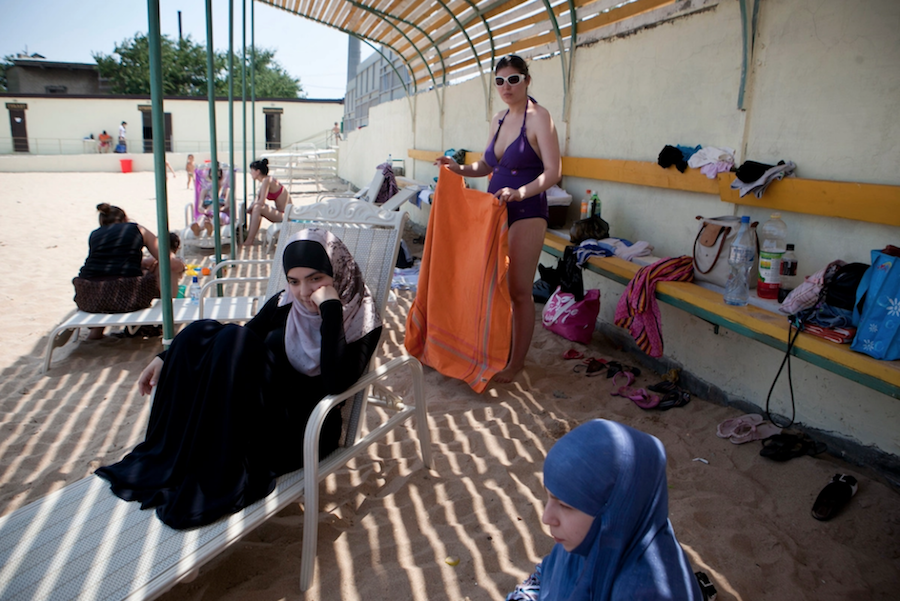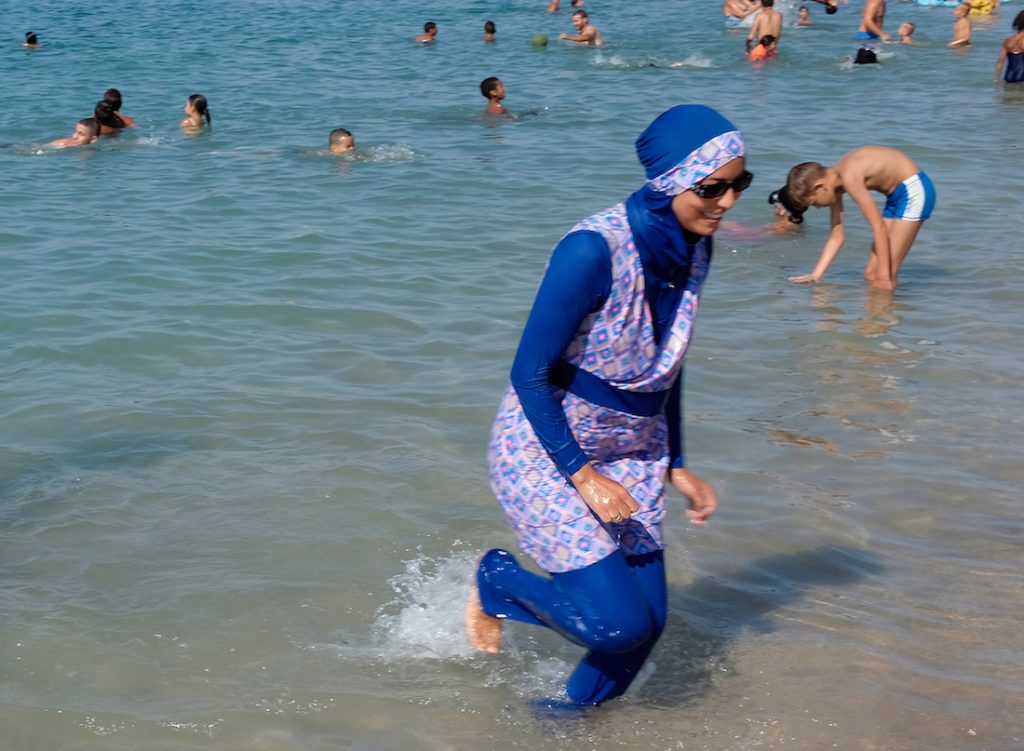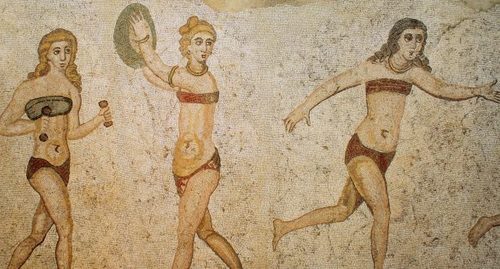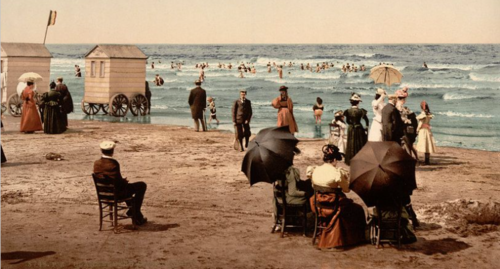Controversial female-only beach in Dagestan sparks scandal
Scandal around the female-only beach in Dagestan
In Dagestan, one of Russia‘s republics, the scandal around the female-only beach in Makhachkala is vigorously discussed on social media. Users condemn the beach itself, the men who appeared on it, and the women who go to a place where there is no protection from immodest eyes. Are there any other female-only beaches in the Caucasus, explores the Caucasian Knot.
Scandal in Makhachkala
In early July 2021, a complaint about the presence of men near the female-only beach in Makhachkala was posted in several large Dagestani Instagram posts.
“We came there with our family, to the female-only ‘Ostrovsk’ beach, sure that there was no one there but women. But we saw that several men calmly drove up to the beach and just watched the girls. Seeing this, we packed up and went home. We recorded a video to share with you and show these shameless people”, reads one of such posts.

The footage shows how two men in motor boats drive up to the shallow water where women swim. A man in clothes that covers his body swims up to one of the boats (the quality of the video does not allow it to be unambiguously asserted whether it is a woman or a man) and, having climbed the boat, sits on the passenger seat, after which he waves his hand to one of the girls who remained in the water. She waves her hand in back, after which the men leave.
- Video of Dagestani schoolboys performing in tutus sparks controversy
- “We don’t care about skirt lengths”. Dress code may disrupt tourist season in Dagestan
Female-only beaches allow women who observe Islam relax by the sea, says one of the first visitors to the beach, Nasidat Magomedova. “A trip to the sea was a rare holiday for me, as for this my husband and I had to travel far out of town. According to Sharia law, a woman should not expose her body in the presence of men, and swimsuits that are sold as ‘Muslim’ are very uncomfortable and, accordingly, you cannot sunbathe in them”, she said.

Female-only beach in Chechnya
In the summer of 2015, a female-only beach was opened on the shores of the Grozny Sea(Chernorechenskoye reservoir) in the village of Aldy. Sand from the Caspian was brought to the territory fenced with a 3-meter fence, slides were built and only women with children under 12 years old are now allowed in.
The female beach is separated from the neighboring male beach by a considerable distance – they are more than a kilometer apart. The beach staff is exclusively female, including lifeguards. Nevertheless, most of the ladies do not undress: they dip into the water or swim in special clothes – burkini.
In the Gudermes water park, separate pools with slides and other attractions exist for men and women. Even the entrances to the baths are as far away as possible from each other.
Aurat and burkini
For Muslims, a beach vacation is directly related to the concept of aurat (awrat). This is a part of the body that believers are obliged to cover in front of other people. For women, before men, everything is considered awrah, except for the oval of the face and hands. For men, it is the part of the body that is located between the navel and the knees (the navel and knees are also awrah).

For a beach holiday in public places, an Islamic swimsuit, the burkini, was invented. The name of the bathing suit came from the combination of the words “bikini” and “burqa” (burqa).
It was invented by the Lebanese designer Aheda Zanetti in the mid-2000s of the 21st century. The swimsuit does not adhere to the body, has a low water absorption capacity and dries quickly.
What about the rest of the world?
Some of the women’s beaches have survived from the 20th century, such as the Pärnu women’s beach in Estonia. In the 20s of the last century, a recreation area was organized here, where women could calmly sunbathe and swim, unbothered by the presence of men. On the one hand, the territory of the women’s beach was fenced off by the sea, and on the other – by a wall, beyond which access was closed to outsiders.
Such is the famous (got into the English Wikipedia as Ladies Beach) sulfurous women’s beach in the Montenegrin Ulcinj. From May to October, only women are allowed to come here, and in winter, both men and children can visit it.
Above the beach, there is an information board which informs in three languages about the peculiarities of its visit. Its popularity was fueled by the desire to stand out in Europe by Yugoslav President Josip Broz Tito, who created a nearby large nudist beach for foreign tourists on Ada Bojana.
In Egypt, talk about female-only beach areas has been going on since 2001 but the first such beach did not open until 2009. The zone is organized as a private closed women’s club, entrance to the territory is paid. There are special women’s days on the beaches in Dubai (UAE). In Turkey, the closed women’s beach Sarisu with an area of 45×75 meters appeared only in 2014.
In the 2010s, women’s beaches appeared in the Azerbaijani Lankaran. Previously, only a few of the local women went to the sea to swim in clothes. It was mainly visitors who swam, and also local Russians, says a local resident Latifa Babaeva. “After the border with Iran was opened, and our people saw such beaches there, they decided to open them here too”, she adds.
There are women’s days on the beaches of Israel, women’s beaches in Australia and the United States. This is not necessarily related to Islam. In Israel, these are Orthodox Jews, in Spain – Carlist Catholics, demanding to divide all the beaches of Northern Spain into male and female.
From cars to nudists
Mass recreation at sea does not have such a big history. It gradually became fashionable from the beginning of the 18th century: it was then that bathing cars (bathing vans) appeared in Britain, the USA, France, Germany, and many other European countries, which were a rather spacious wooden or canvas dressing room with wheels and steps leading inside. Their purpose was to ensure the separation of bathing on common beaches – and at first, there were no separate beaches.

The bather walked into the room in her street clothes. In solitude, she changed into a bathing suit that was very modest by today’s standards and left the outer garment inside the booth where it was kept dry. Then the bathing machine was lowered into the water with the help of horses, and sometimes along the rails.
As soon as the carriage drove out to sea a sufficient distance, the bather exited it through a door facing away from prying eyes on the beach. Some cars were equipped with a special awning that could be lowered directly into the water, creating a separate bathing area.

By the 19th century, male and female beaches were separated in many countries. Only at the beginning of the 20th century, the ban on joint beach vacations for men and women was canceled in Great Britain, and in the Bulgarian Varna, a mixed beach appeared only in 1927. Interestingly, the popularity of mixed beaches in the world coincided with the emergence of nudist beaches in Europe, Australia, and America.
Bathing suits
In what way did women vacation at sea before? In ancient Rome – in tracksuits such as bikinis or light short tunics. In the 18th century, women bathed in long bathing dresses that were made of fabric that did not become transparent when wet. Caps were often worn on their heads, and stockings and cloth shoes on their feet. To prevent the dress from floating underwater, small metal weights were sewn into its hem.
With the onset of the twentieth century, swimwear began to decrease in size, despite the fact that in those days a woman could be arrested for excessive exposure of her body. So in 1907, while participating in the underwater ballet show – a variant of synchronized swimming, but with diving into glass tanks, professional swimmer Annette Kellerman, who came to the United States from Australia, was arrested for wearing a tight-fitting swimsuit with an open neck, legs, and hands.
In 1946, designer Louis Reard proposed a bikini – a swimsuit that consisted of short swimming trunks and a tight bra. In France, this swimsuit took root very quickly thanks to the actress Brigitte Bardot and the singer Dalida. The world breakthrough happened in 1962, at the dawn of the sexual revolution: the first James Bond film, Doctor No, was released worldwide and Ursula Andress’ white bikini was presented as a call for the discovery of the female body.



















